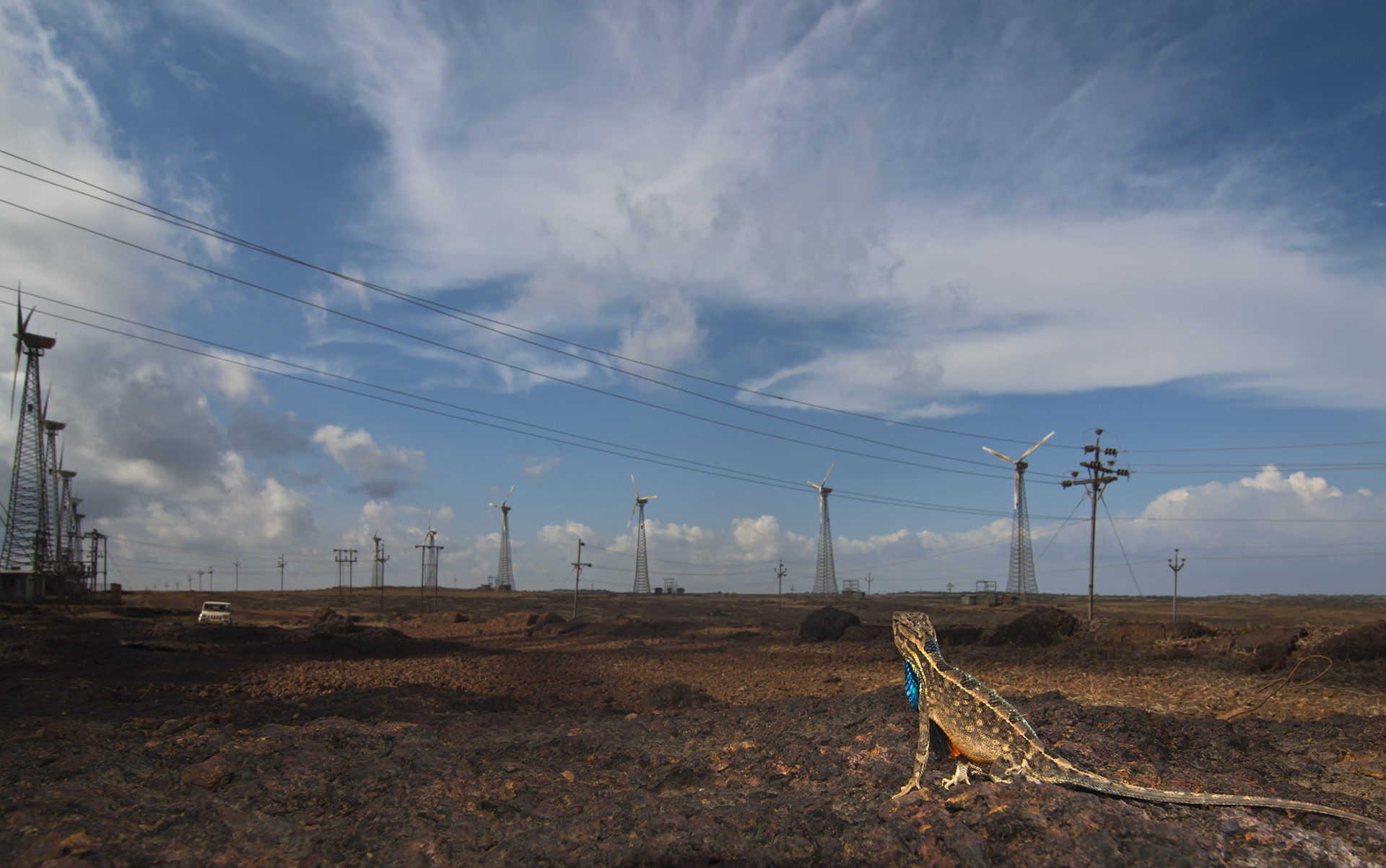Anything and everything in excess destabilizes the balance of nature. Wind energy is considered to be green but unfortunately there is no policy regulation on how many windmills a landscape can sustain. This might turn out to be hazardous in future and definitely raises a question on its sustainability. Windmills have changed the area around Satara in Maharashtra dramatically. Asia’s largest wind farm is located in and around the Chalkewadi plateau in the northern Western Ghats. The lateritic rocks of the region are broken down to construct more windmills and other structures that accompany them. This photo story is about this unique ecosystem, the biodiversity that survives on these isolated plateau islands and the conservation issues associated with it.



Islands: land surrounded by water. Islands: isolated, connected, diverse, unique, threatened. Islands can be found in unexpected places.

Lateritic soils are rich in aluminium and iron. Rocks on the Chalkewadi plateau, in the Satara district, show typical signs of weathering with the reddish tinges formed by rusting iron.


Lateritic soils are rich in aluminium and iron. Rocks on the Chalkewadi plateau, in the Satara district, show typical signs of weathering with the reddish tinges formed by rusting iron.

Although rich in geological history, the barren plateau-islands, burnt and desolate in the harsh May sun seem devoid of any signs of wildlife. Could anything survive here?

Or should we be looking in the lush evergreen forests of the adjacent Koyna Tiger Reserve?

The sun may drive all other animals but the fan throated lizards (Sitana ponticeriana) revel on the bare rocks. An ideal arena for flamboyant males to display their colourful dewlap sacs and attract females.



The heat lays the plateau bare, but beneath the rocks reptiles thrive. A Hemidactylus satarensis gecko, waiting under the rocks biding its time till the sun goes down.

The deadly saw scaled viper (Echis carinatus), holds the distinction of having the quickest strike rate of all Indian snake species. The midday sun leaves the animal even more irritable.


Animals from the adjacent Sahyadri range often spill onto the plateau.

The bamboo pit viper (Trimeresurus gramineus) rests on the barren tree, waiting for night to fall.

As night falls, mammals such as the Common palm civet (Paradoxurus hermaphrodites)

and the Small Indian civet (Viverricula indica) move out of the Koyna forest towards the Chalkewadi plateau.


In the cool of the night Indian foxes (Vulpes bengalensis) make it out of their dens. A curious fox cub looks out of the plateau at night.

No man is an island, but each plateau is one. Hemidactylus satarensis is a classic example of plateaus catalyzing speciation. This rare species is endemic to Chalkewadi plateau.



Another member of the Hemidactylus genus, H. albofasciatus, perches on rust red lateritic rocks on plateaus in the coastal Ratnagiri district.



As hot days turn into cool nights, summers make way for monsoon. Fireflies signify the onset of the rains. Before the season of plenty, these beetles use bio-luminescence to call out to potential mates.

With the beginning of June, the monsoon clouds make their way over the plateau.

The first rains end the drought of the plateau. Transformed by the rain, small pools begin to appear on around the rocks

Washed clean by the rains, the plateau is a haven for frogs. Xanthophryne tigerina, endemic to the Northern Western Ghats calls over the din of the rain, signaling to potential females on the plateau.

Its efforts pay off and the circle of life continues.

Several other species await discovery and a name. These frogs of the Zakerana genus, most likely unidentified have only been encountered on this plateau.

The abundance of frogs such as this endemic Raorchestes species makes the plateau inviting for several other animals of the Sahyadris.

The cat snake Boiga beddomei endemic to the Western Ghats, often visits the plateau during the rains to make a good meal of frogs.

Crabs such as these remain dormant in the dry summer season. With the first rains, they emerge to feed and breed around these temporary pools.


From tiny hamlets of the Koyna Tiger reserve, women bring their livestock to graze on the plateau. This woman stands on the edge of the plateau looking for her cattle.


The most dramatic change however are the windmills in the Satara region. Asia’s largest wind farm is located in and around the Chalkewadi plateau.

Aponogeton satarensis is an endemic aquatic plant known only from five temporary pools around the Kaas area.

One of these pools has today disappeared, replaced by a windmill.

Discovered and lost at the same time.

The lateritic rocks of the region are broken down to construct more windmills, and other structures that accompany them.

Even the ubiquitous sitanas cannot escape their onslaught.


And birds being hit by windmill blades lead to further loss of life for these plateaus. With their numbers declining, the story of these islands may have to be retold once again in the coming years.














































